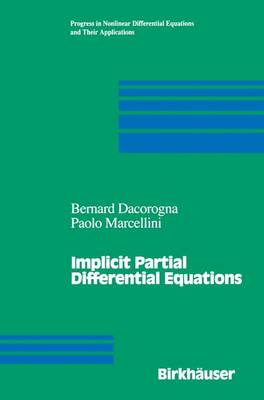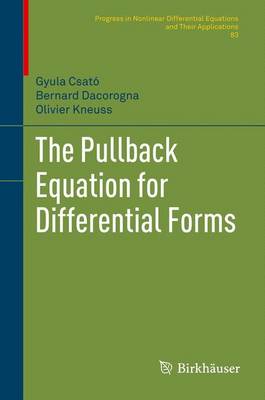Progress in Nonlinear Differential Equations and Their Applications
2 primary works
Book 37
Implicit Partial Differential Equations
by Bernard Dacorogna and Paolo Marcellini
Book 83
The Pullback Equation for Differential Forms
by Gyula Csato, Bernard Dacorogna, and Olivier Kneuss
An important question in geometry and analysis is to know when two k-forms f and g are equivalent through a change of variables. The problem is therefore to find a map so that it satisfies the pullback equation: *(g) = f.
In more physical terms, the question under consideration can be seen as a problem of mass transportation. The problem has received considerable attention in the cases k = 2 and k = n, but much less when 3 k n-1. The present monograph provides the first comprehensive study of the equation.
The work begins by recounting various properties of exterior forms and differential forms that prove useful throughout the book. From there it goes on to present the classical Hodge-Morrey decomposition and to give several versions of the Poincare lemma. The core of the book discusses the case k = n, and then the case 1 k n-1 with special attention on the case k = 2, which is fundamental in symplectic geometry. Special emphasis is given to optimal regularity, global results and boundary data. The last part of the work discusses Hoelder spaces in detail; all the results presented here are essentially classical, but cannot be found in a single book. This section may serve as a reference on Hoelder spaces and therefore will be useful to mathematicians well beyond those who are only interested in the pullback equation.
The Pullback Equation for Differential Forms is a self-contained and concise monograph intended for both geometers and analysts. The book may serve as a valuable reference for researchers or a supplemental text for graduate courses or seminars.

